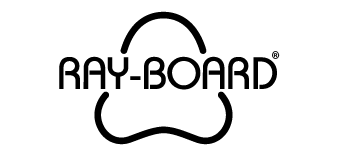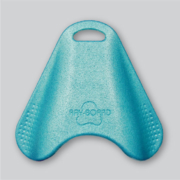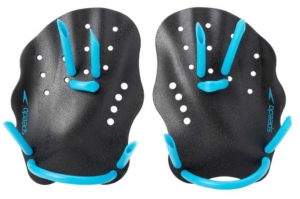Best Swim Training Gear of 2025
Does Your Swim Training Gear Really Matter?
You may consider yourself a swimming purist—someone who gets by with just a swimsuit, towel, and goggles. That’s great! With dedication, knowledge, and practice, you can become a proficient swimmer with minimal equipment. However, incorporating additional swim training gear into your routine can transform your workouts, improving technique, building strength, and keeping training sessions dynamic and engaging. In this article, we’ll review some of the best swim training tools and how they can elevate your swim training to the next level.
Why Use Swim Training Gear?
Swim training is all about efficiency, endurance, and technique. While you can make strides with hard work and repetition, the right swim training gear can help you target specific muscle groups, improve your body position in the water, and refine your stroke mechanics.
Swim training tools are not just for beginners—they’re for anyone looking to enhance their performance. For example, professional swimmers use paddles to strengthen their upper body, fins to improve kick efficiency, and snorkels to focus on body alignment and breathing technique. These tools make workouts more purposeful, helping you address weak areas while optimizing your strengths.
Essential Swim Training Tools
1. Kickboards
Kickboards are one of the most common pieces of swim training gear and for good reason. They isolate your lower body, allowing you to focus solely on your kick. Whether you’re refining your freestyle kick or working on flutter kicks, a kickboard is invaluable for improving leg strength and endurance.
2. Pull Buoys
A pull buoy is a must-have for swimmers looking to improve upper-body strength and streamline position. By placing the buoy between your legs, you can isolate your arms during freestyle, backstroke, or butterfly drills, honing your pull technique while maintaining proper body alignment.
3. Fins
Fins are a versatile swim training tool that can benefit swimmers of all levels. Short fins help build ankle flexibility and leg strength, while long fins provide additional propulsion, making it easier to focus on stroke technique. Fins are especially helpful for beginners working on their flutter or dolphin kicks.
4. Paddles
Hand paddles increase the surface area of your hands, allowing you to catch more water with each stroke. This added resistance strengthens your shoulders and arms while improving stroke efficiency. Just be careful to use them correctly, as improper use can strain your shoulders.
5. Snorkels
A swim snorkel is an excellent training tool for improving body alignment and breathing technique. By eliminating the need to turn your head to breathe, you can focus on maintaining a steady stroke and a streamlined position. Snorkels are especially useful for swimmers recovering from injuries or working on stroke mechanics.
6. Resistance Bands
Resistance bands are perfect for building explosive strength and speed in the water. Some are designed for dryland training, helping you strengthen swim-specific muscles, while others attach to pool walls for tethered swimming, adding resistance to your strokes.
7. Tempo Trainers
A tempo trainer is a small, waterproof device that helps swimmers develop a consistent stroke rate. It’s a great tool for improving pacing during long-distance swims or refining technique at different speeds.
How to Choose the Right Swim Training Gear
With so many swim training tools available, how do you decide which ones to add to your swim bag? Start by identifying your goals. Are you looking to improve your kick, refine your stroke, or build strength? Here’s a quick guide:
- For Technique Improvement: Try snorkels, tempo trainers, or paddles.
- For Strength Building: Use pull buoys, paddles, and resistance bands.
- For Kick Focus: Add fins or a kickboard to your routine.
- For Overall Performance: Combine multiple tools for a comprehensive training program.
Benefits of Swim Training Tools
Incorporating the right swim training gear into your routine offers several benefits:
- Improved Technique: Tools like snorkels and tempo trainers help refine your stroke mechanics, making you a more efficient swimmer.
- Increased Strength: Gear like paddles and resistance bands provide added resistance, building muscle and endurance.
- Enhanced Versatility: Switching between tools keeps your workouts fresh and engaging, preventing burnout.
- Focused Training: Whether you’re isolating your kick or pull, swim training tools help you target specific areas of improvement.
Best Swim Training Gear
Kickboard: Ray-Board
Ray-Board is the newest kickboard available for those looking make kick sets an important part of their swim training. Ray-Board’s ergonomic design positions your elbows several inches lower and wider than with traditional flat kickboards. This takes stress off of your shoulders, neck and back. While using Ray-Board your upper body truly gets to rest, allowing you to focus on your kick. It’s simply the most comfortable kickboard you can use.

Paddles: Speedo Nemesis Contour Paddles
Speedo paddles have always been great, but the contouring of the Nemesis model makes them even better. Their shape positions them on your hands naturally, and the straps provide the necessary additional support. They are big enough that you can really feel the water, but not so big that they disrupt your natural stroke. They are reasonably priced and are available in three sizes.
Fins: Finis Z2 Gold Zoomers
You might not have expected to see significant innovation in swim flippers, but the Finis Z2 Gold Zoomers achieve a meaningful advancement. The unique “flex box” on the underside of the flipper catches water on the up kick, which is intended to strengthen the hamstrings and glutes. Stiffening ribs allow your full foot to generate power without hyperflexing or fatiguing the forefoot. They are available in many sizes so you can get the perfect fit.
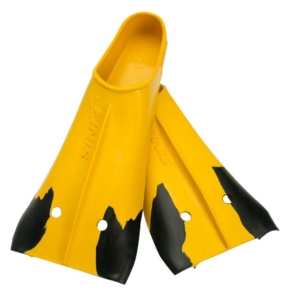
Pull Buoy: Tapered-8
Pull buoys can be useful training tools, and all competitive swimmers should have one, but there’s only one that is shaped ergonomically. Most are fairly generic. Tapered-8 is tapered to large to small on a couple of different planes, to give the buoyancy where you need it and to stay in place. Essentially, its comfortable for lots of laps.
Snorkel: MP FOCUS Swim Snorkel
You may not see a lot of swim snorkels at your pool, but don’t let that turn you off to them. After you acquired the basic swim gear and you’re looking for your next piece of equipment, you may want to try a swim snorkel… and the MP Focus is a great place to start. A lot of thought went into this design. It comfortably fits the face and mouth, stay steady as you swim, and doesn’t take on a lot of water. This allows you to truly focus on your stroke.
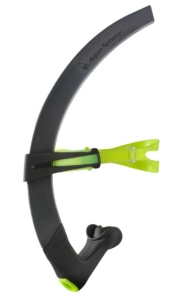
Goggles: Speedo Vanquisher 2.0 Mirrored
As you get more competitive you may consider owning more than one pair of goggles. The Speedo Vanquisher 2.0 goggles provide a low profile inner-eye fit, wide visibility, and anti-fog design that makes these performance goggles the go to piece of equipment for days when performance matters. As you’d expect, Speedo provides exceptional design and engineering at a reasonable price. You could spend more if your simply looking to intimidate other swimmers, but for most swimmers the Vanquisher 2.0 is hard to beat.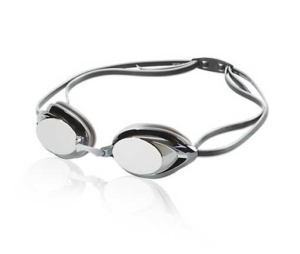
Bag: Speedo Teamster Swim Bag
You probably shouldn’t be shoving all this new swim gear it into an old worn out gym bad. You need a dedicated swim bag. If you’ve spent much time around a club swim team you’ve likely seen dozens of this Speedo swim bag, and likely in just as many different colors. These bags have plenty of compartments for your dry and wet gear, and its available int two sizes, one that’s perfect for kids and another for adults. With so many patterns available you can simultaneously join the crowd and express your unique style.
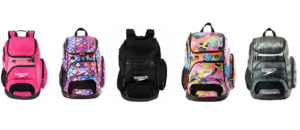
Lap Counting Watch: Garmin Swim 2
We love the small profile of this Garmin watch. The features support serious swim analytics, but will also provide basic tracking for your run, bike, steps, sleep, etc. You can preload swim workouts. It’s rest and stroke detection functions work reliably. It has wrist based heart rate detection, and optionally connects to a chest based heart rate sensor if you want really accurate data. It tracks both pool work outs and open water swims. This tech gets stronger every year, and the Garmin Swim 2 delivers a lot of functionality.
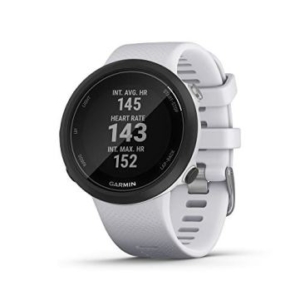
Safety Float: Kiefer Saferswimmer Open Water Swim Buoy
This is a must for open water swimmers. Seriously…. Safety first. Sure, you may be an amazing athlete who never gets cramps, or who hate how it feels to be dragging a buoy, but it only takes one time for this product to be worth the expense and effort.
Swim Training Gear for Beginners
If you’re new to swim training, start with basic tools like a kickboard, pull buoy, and fins. These are user-friendly and will help you build foundational skills. As you progress, you can incorporate more advanced swim training gear like paddles and tempo trainers to fine-tune your technique.
Swim Training Gear for Competitive Swimmers
For competitive swimmers, advanced swim training tools can make all the difference. High-resistance paddles, ankle bands, and drag suits challenge your strength and stamina, simulating race conditions. Resistance bands and tempo trainers can help you perfect your pacing and stroke rate, ensuring peak performance on race day.
Final Thoughts
Does your swim training gear really matter? Absolutely! Whether you’re a beginner looking to build confidence or an advanced swimmer aiming to shave seconds off your time, the right swim training tools can elevate your performance. From kickboards and pull buoys to resistance bands and snorkels, these tools are designed to help you train smarter, not harder.
So, what are you waiting for? Start exploring the best swim training gear for your needs and make every lap count.
